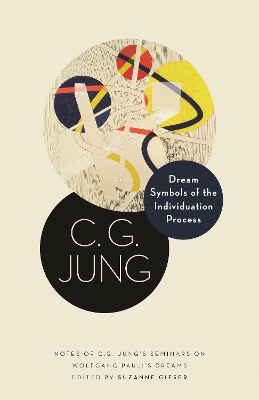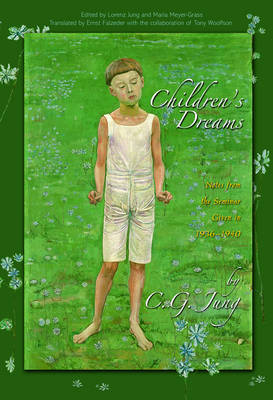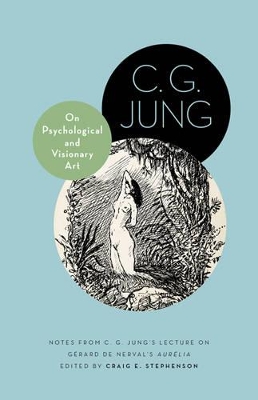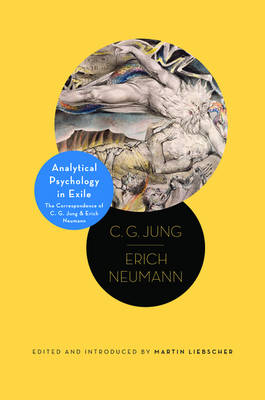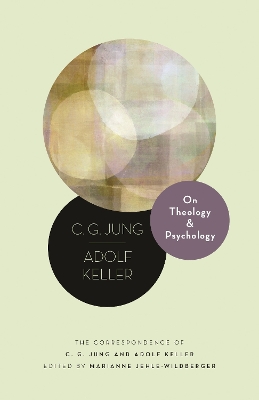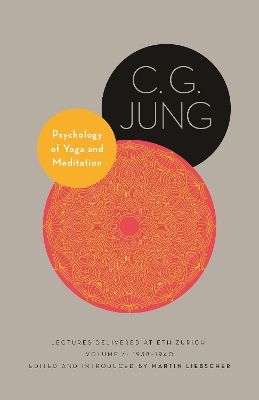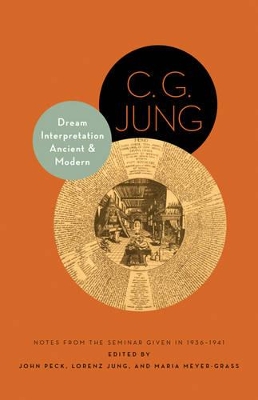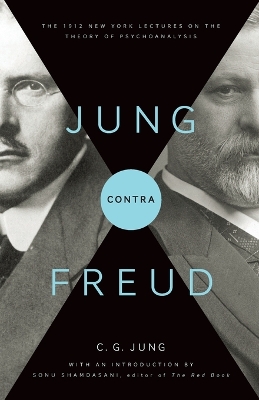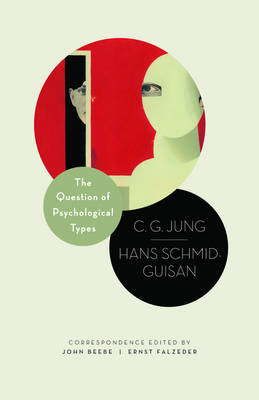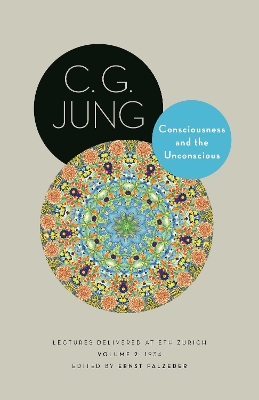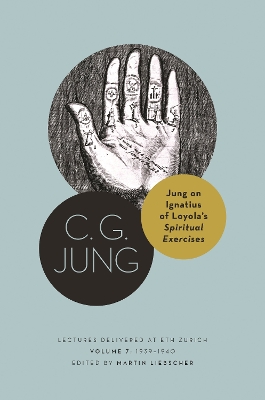Philemon Foundation
2 primary works • 14 total works
Book 17
Jung’s legendary American lectures on dream interpretation
In 1936 and 1937, C. G. Jung delivered two legendary seminars on dream interpretation, the first on Bailey Island, Maine, the second in New York City. Dream Symbols of the Individuation Process makes these lectures widely available for the first time, offering a compelling look at Jung as he presents his ideas candidly and in English before a rapt American audience.
The dreams presented here are those of Nobel Prize–winning physicist Wolfgang Pauli, who turned to Jung for therapeutic help because of troubling personal events, emotional turmoil, and depression. Linking Pauli’s dreams to the healing wisdom found in many ages and cultures, Jung shows how the mandala—a universal archetype of wholeness—spontaneously emerges in the psyche of a modern man, and how this imagery reflects the healing process. He touches on a broad range of themes, including psychological types, mental illness, the individuation process, the principles of psychotherapeutic treatment, and the importance of the anima, shadow, and persona in masculine psychology. He also reflects on modern physics, the nature of reality, and the political currents of his time. Jung draws on examples from the Mithraic mysteries, Buddhism, Hinduism, Chinese philosophy, Kundalini yoga, and ancient Egyptian concepts of body and soul. He also discusses the symbolism of the Catholic Mass, the Trinity, and Gnostic ideas in the noncanonical Gospels.
With an incisive introduction and annotations, Dream Symbols of the Individuation Process provides a rare window into Jung’s interpretation of dreams and the development of his psychology of religion.
Book 18
Jung’s lectures on the history of psychology—in English for the first time
Between 1933 and 1941, C. G. Jung delivered a series of public lectures at the Swiss Federal Institute of Technology (ETH) in Zurich. Intended for a general audience, these lectures addressed a broad range of topics, from dream analysis to yoga and meditation. Here for the first time in English are Jung’s lectures on the history of modern psychology from the Enlightenment to his own time, delivered in the fall and winter of 1933–34.
In these inaugural lectures, Jung emphasizes the development of concepts of the unconscious and offers a comparative study of movements in French, German, British, and American thought. He also gives detailed analyses of Justinus Kerner’s The Seeress of Prevorst and Théodore Flournoy’s From India to the Planet Mars. These lectures present the history of psychology from the perspective of one of the field’s most legendary figures. They provide a unique opportunity to encounter Jung speaking for specialists and nonspecialists alike and are the primary source for understanding his late work.
Featuring cross-references to the Jung canon and explanations of concepts and terminology, History of Modern Psychology painstakingly reconstructs and translates these lectures from manuscripts, summaries, and recently recovered shorthand notes of attendees. It is the first volume of a series that will make the ETH lectures available in their entirety to English readers.
Presented here in an inspired English translation commissioned by the Philemon Foundation, these seminars reveal Jung as an impassioned educator in dialogue with his students and developing the practice of analytical psychology. An invaluable document of perhaps the most important psychologist of the twentieth century at work, this splendid volume is the fullest representation of Jung's views on the interpretation of children's dreams, and signals a new wave in the publication of Jung's collected works as well as a renaissance in contemporary Jung studies.
Analytical Psychology in Exile: The Correspondence of C. G. Jung and Erich Neumann
by Carl Gustav Jung, C. G. Jung, and Erich Neumann
The lecture suggests how Jung's own experiments with active imagination influenced his reading of Nerval's Aurelia as a parallel text to his own Red Book. With Craig Stephenson's authoritative introduction, Richard Sieburth's award-winning translation of Aurelia, and Alfred Kubin's haunting illustrations to the text, and featuring Jung's reading marginalia, preliminary notes, and revisions to a 1942 lecture, On Psychological and Visionary Art documents the stages of Jung's creative process as he responds to an essential Romantic text.
They affirm Neumann's importance as a leading psychologist of his time and paint a fascinating picture of the psychological impact of immigration on the German Jewish intellectuals who settled in Palestine and helped to create the state of Israel. Featuring Martin Liebscher's authoritative introduction and annotations, this volume documents one of the most important intellectual relationships in the history of analytical psychology.
Jung's correspondence with one of the twentieth century's leading theologians and ecumenicists
On Theology and Psychology brings together C. G. Jung's correspondence with Adolf Keller, a celebrated Protestant theologian who was one of the pioneers of the modern ecumenical movement and one of the first religious leaders to become interested in analytical psychology. Their relationship spanned half a century, and for many years Keller was the only major religious leader to align himself with Jung and his ideas. Both men shared a lifelong engagement with questions of faith, and each grappled with God in his own distinctive way.
Presented here in English for the first time are letters that provide a rare look at Jung in dialogue with a theologian. Spanning some fifty years, these letters reveal an extended intellectual and spiritual discourse between two very different men as they exchange views on the nature of the divine, the compatibility of Jungian psychology and Christianity, the interpretation of the Bible and figures such as Jesus and Job, and the phenomenon of National Socialism. Although Keller was powerfully attracted to Jung's ideas, his correspondence with the famed psychiatrist demonstrates that he avoided discipleship. Both men struggled with essential questions about human existence, spirituality, and well-being, and both sought common ground where the concerns of psychologists and theologians converge.
Featuring an illuminating introduction by Marianne Jehle-Wildberger, On Theology and Psychology offers incomparable insights into the development of Jung's views on theology and religion, and a unique window into a spiritual and intellectual friendship unlike any other.
Jung's illuminating lectures on the psychology of Eastern spirituality
Between 1933 and 1941, C. G. Jung delivered a series of public lectures at the Swiss Federal Institute of Technology (ETH) in Zurich. Intended for a general audience, these lectures addressed a broad range of topics, from dream analysis to the psychology of alchemy. Here for the first time are Jung's illuminating lectures on the psychology of yoga and meditation, delivered between 1938 and 1940.
In these lectures, Jung discusses the psychological technique of active imagination, seeking to find parallels with the meditative practices of different yogic and Buddhist traditions. He draws on three texts to introduce his audience to Eastern meditation: Patañjali's Yoga Sûtra, the Amitâyur-dhyâna-sûtra from Chinese Pure Land Buddhism, and the Shrî-chakra-sambhâra Tantra, a scripture related to tantric yoga. The lectures offer a unique opportunity to encounter Jung as he shares his ideas with the general public, providing a rare window on the application of his comparative method while also shedding light on his personal history and psychological development.
Featuring an incisive introduction by Martin Liebscher as well as explanations of Jungian concepts and psychological terminology, Psychology of Yoga and Meditation provides invaluable insights into the evolution of Jung's thought and a vital key to understanding his later work.
An invaluable document of perhaps the most important psychologist of the twentieth century at work, this splendid book is the fullest representation of Jung's interpretations of dream literatures, filling a critical gap in his collected works.
Jung’s lectures on consciousness and the unconscious—in English for the first time
Between 1933 and 1941, C. G. Jung delivered a series of public lectures at the Swiss Federal Institute of Technology (ETH) in Zurich. Intended for a general audience, these lectures addressed a broad range of topics, from dream analysis and yoga to the history of psychology. They are at the center of Jung’s intellectual activity in this period and provide the basis of his later work. Here for the first time in English is Jung’s introduction to his core psychological theories and methods, delivered in the summer of 1934.
With candor and wit, Jung shares with his audience the path he himself took to understanding the nature of consciousness and the unconscious. He describes their respective characteristics using examples from his clinical experience as well as from literature, his travels, and everyday life. For Jung, consciousness is like a small island in the ocean of the unconscious, while the unconscious is part of the primordial condition of humankind. Jung explains various methods for uncovering the contents of the unconscious, in particular talk therapy and dream analysis.
Complete with explanations of Jungian concepts and terminology, Consciousness and the Unconscious painstakingly reconstructs and translates these talks from detailed shorthand notes by attendees, making a critical part of Jung’s work available to today’s readers.
Jung’s lectures on the psychology of Jesuit spiritual practice—unabridged in English for the first time
Between 1933 and 1941, C. G. Jung delivered a series of public lectures at the Swiss Federal Institute of Technology (ETH) in Zurich. Intended for a general audience, these lectures addressed a broad range of topics, from yoga and meditation to dream analysis and the psychology of alchemy. Here for the first time are Jung’s complete lectures on Ignatius of Loyola’s Spiritual Exercises, delivered in the winter of 1939–1940.
These illuminating lectures are the culmination of Jung’s investigation into traditional forms of meditation and their parallels to his psychotherapeutic method of active imagination. Jung presents Loyola’s exercises as the prime example of a Christian practice comparable to yoga and Eastern meditation, and gives a psychological interpretation of the visions depicted in the saint’s autobiographical writings. Offering a unique opportunity to encounter the brilliant psychologist as he shares his ideas with the general public, the lectures reflect Jung’s increasingly positive engagement with Roman Catholicism, a development that would lead to his fruitful collaborations after the war with eminent Catholic theologians such as Victor White, Bruno de Jésus-Marie, and Hugo Rahner.
Featuring an authoritative introduction by Martin Liebscher along with explanations of Jungian concepts and psychological terminology, this splendid book provides an invaluable window on the evolution of Jung’s thought and a vital key to understanding his later work.
Jung’s landmark seminar on the psychotherapeutic method of active imagination
In the fall of 1931, C. G. Jung gave an intensive series of seminars on the use of active imagination in clinical practice. Delivered at the Hotel Sonne in Zurich, these lectures describe a technique in which subjects are encouraged to deliberately invoke their fantasies in a waking state and paint or sculpt the images that arise and even engage in dialogue with the characters that appear. Here for the first time in English is Jung’s seminar on the theory and application of active imagination, offering unparalleled insights into his most distinctive contribution to psychotherapeutic method.
These illuminating talks center on paintings and drawings done by Jung’s patients in clinical sessions. Tracing connections between the spontaneous products of the individuation process and Eastern esoteric traditions, Jung demonstrates how these images stem from the collective unconscious and can be understood through mythological parallels, including those of Tantrism and Kundalini Yoga, which he was exploring at the time. He shows how the use of active imagination can promote the further individuation of patients.
With explanations of Jungian concepts and terminology, The Active Imagination sheds light on the foundational role of Jung’s thought in the development of modern art therapy and opens a window on a therapeutic method that he pioneered years earlier during self-analysis and recorded in the legendary Red Book.
